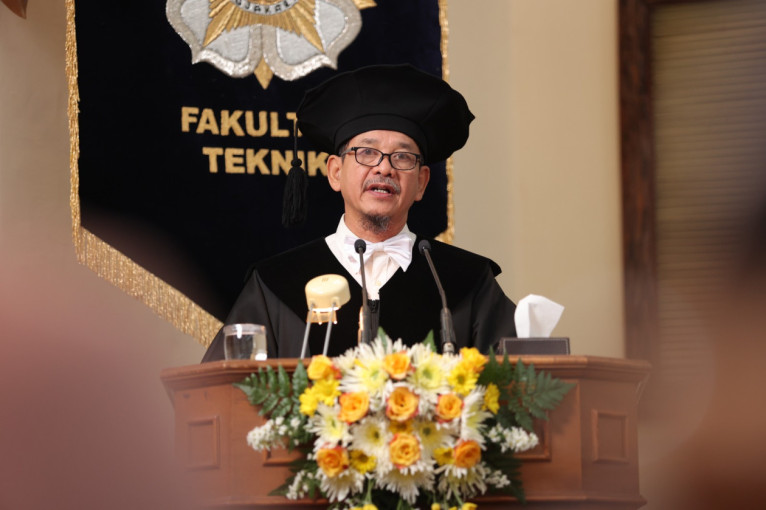
Dr. Heru Santoso Budi Rochardjo was inaugurated as a professor of mechanical engineering at the Faculty of Engineering, Universitas Gadjah Mada, on Tuesday (24/10).
During his inauguration ceremony, he delivered a speech entitled “Recent Developments in Composite Materials: Opportunities and Challenges in Automotive Applications.”
Professor Rochardjo emphasized that new lightweight yet strong materials, such as composite materials, can reduce the structural weight of vehicles, leading to increased fuel efficiency.
He explained that a 10% reduction in vehicle weight could result in a 6%-8% improvement in fuel efficiency, as less energy is required to accelerate a lighter vehicle. According to him, this could be a solution to reducing emissions and pollution in major cities.
“In today’s era, where energy consumption needs to be reduced, carbon emissions need to be lowered, and global warming needs to be controlled, lightweight but strong and rigid materials, or those with high specific strength and rigidity, will be preferred,” he said.
“Composite materials can provide these properties.”
He continued by mentioning that when composite materials were first developed, they were primarily applied in weight-sensitive constructions such as aircraft, rockets, and sports equipment.
Currently, the use of composites has expanded to various fields, such as ground and marine transportation, building construction, bridge construction, healthcare, and numerous other areas.
“In the healthcare field, for instance, composite materials have been used for dental restoration,” the professor said.
“Concrete reinforcement has employed carbon fibers and CNT for structural health monitoring; nano cellulose and graphene have been used in electronic components due to their conductivity advantages, and many other applications.”
Composite materials, he suggested, hold promise in reducing vehicle weight while maintaining functionality and safety.
The advantages of composites in automotive applications include impact resistance for passenger safety, fatigue and corrosion resistance for durability, high specific strength to reduce weight, the ability to design fiber directions according to component stress, thereby saving material, and many more.
However, numerous challenges remain in the use, manufacturing, and development of these materials, each with a range limited only by human innovation.
Specific criteria must be met for a material to be used in a modern vehicle, including environmental regulations and passenger safety and comfort.
Generally, composites are more brittle than metals. This necessitates structural design considerations to ensure composite components are not easily damaged, such as using stronger fibers or employing fail-safe design structural concepts. The material and manufacturing costs are notably high.
“This requires innovation, ideas, and development to reduce material costs. Moreover, innovative manufacturing methods are needed to speed up the manufacturing process, making it better and more cost-effective,” said Professor Rochardjo.
Author: Gloria
Photographer: Firsto

